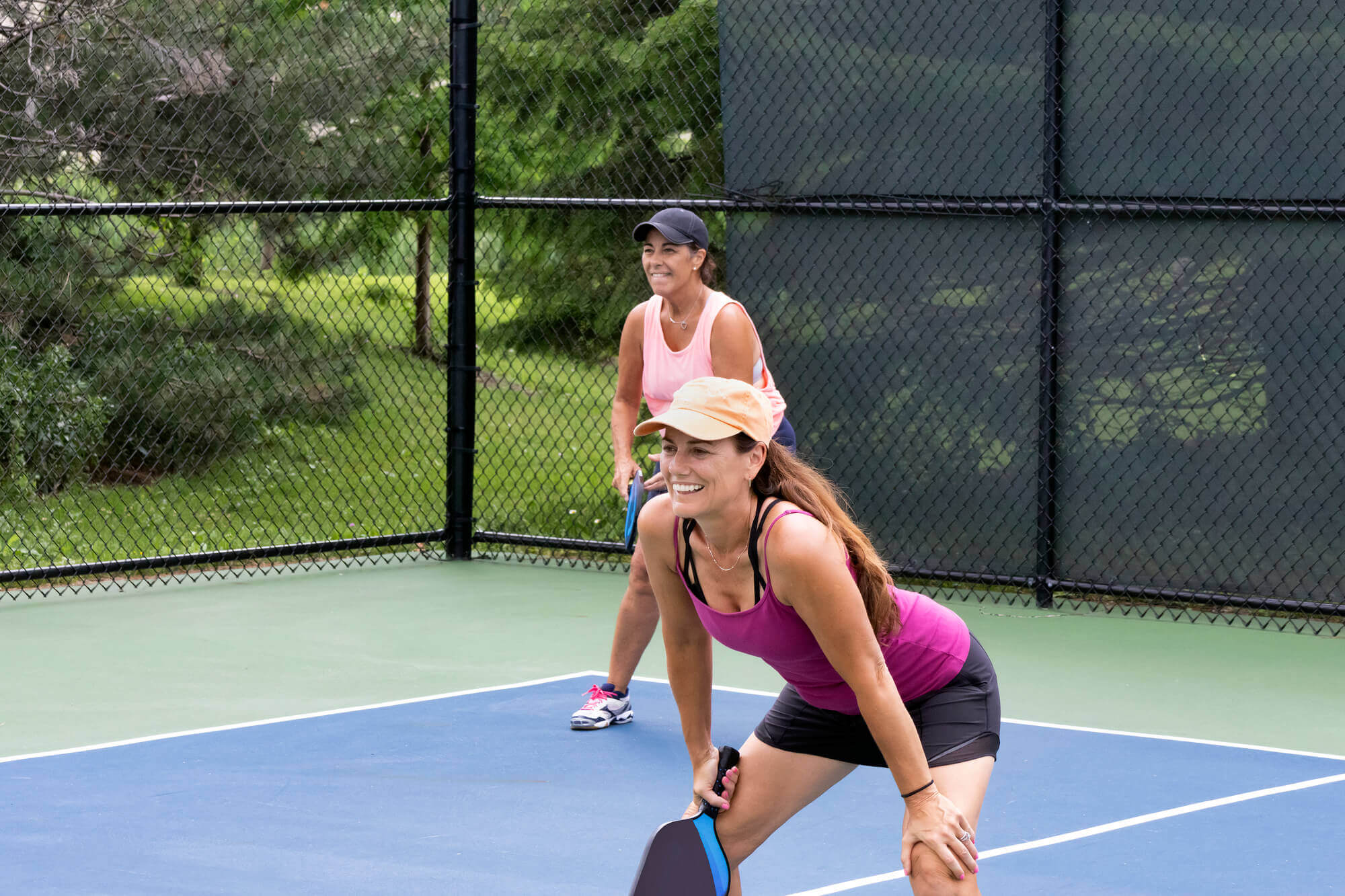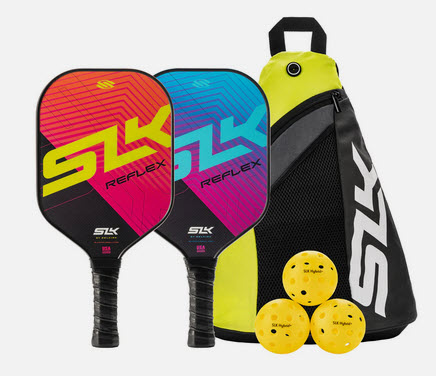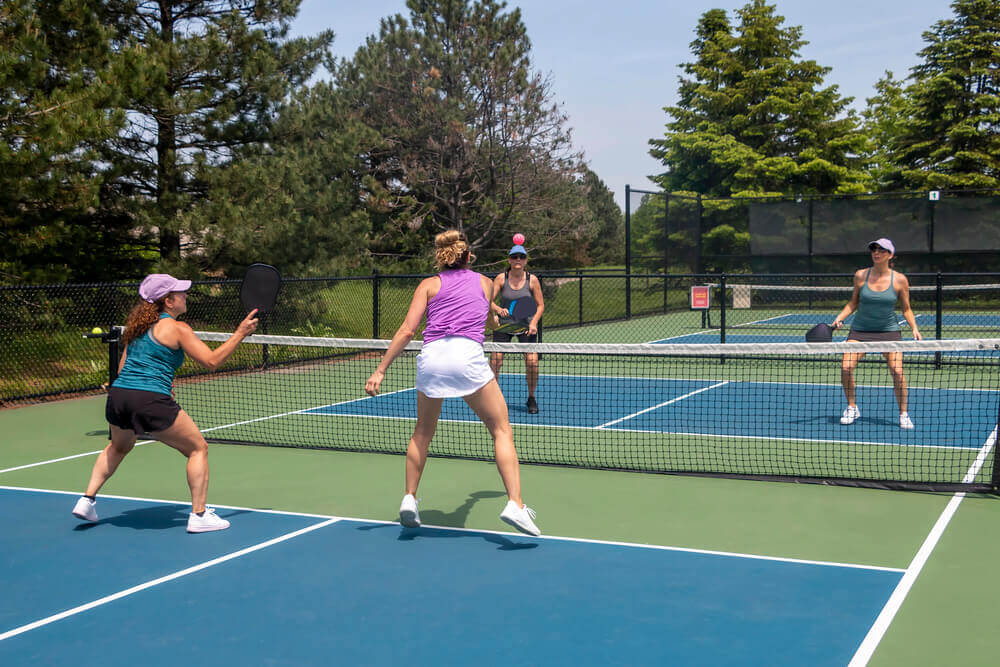Imagine this: You’re setting up your campsite, the sun is setting, and you’ve just finished a day of exploring the natural beauty that only RVing can bring you to. But instead of winding down, the energy is just getting started. Across the campground, laughter and the rhythmic sound of a paddle hitting a plastic ball fill the air. Welcome to the new era of camping where pickleball isn’t just a game; it’s a community event, a reason to gather, and a way to keep the spirit of adventure alive even after the trails are walked.
Pickleball, a sport that blends elements of tennis, badminton, and table tennis, has become the darling of RV parks and campgrounds across the nation. Its appeal lies in its simplicity and accessibility, making it perfect for everyone from the seasoned athlete to the retiree looking for some fun. But why has it taken root so firmly in the RVing community? Let’s dive into this delightful trend that’s changing how we think about leisure at campgrounds.

As RV enthusiasts, we’re always looking for new ways to make our motorhome adventures memorable. The beauty of pickleball is that it requires little space compared to traditional sports like tennis, making it an ideal fit for the often limited recreational areas of campgrounds. This game doesn’t just provide exercise; it fosters a sense of community. You’ve probably seen it yourself – groups forming, newcomers being taught the ropes, and spontaneous tournaments that last into the evening, all under the glow of campground lights.

But it’s not just about the gear; it’s about the experience. Imagine pulling your RV into a campground where the first thing you see isn’t just a signpost for sites but freshly painted pickleball courts, inviting you to join in the fun. These courts aren’t just add-ons; they’ve become focal points of social interaction. For instance, at places like Encore Tranquility Lakes in Florida, pickleball courts are among the top amenities, drawing in RVers who plan their trips around these facilities.
The beauty of integrating pickleball into RVing is the educational aspect it brings. RV education isn’t just about learning how to maintain your motorhome or navigate the best routes; it’s also about enriching your lifestyle on the road. Many campgrounds now offer pickleball clinics as part of their RV education programs, teaching not just the rules but strategies and techniques. This is where you learn to adapt to different playing surfaces, understand the nuances of outdoor play, and perhaps most importantly, meet fellow RVers.
The beauty of integrating pickleball into RVing is the educational aspect it brings. RV education isn’t just about learning how to maintain your motorhome or navigate the best routes; it’s also about enriching your lifestyle on the road. Many campgrounds now offer pickleball clinics as part of their RV education programs, teaching not just the rules but strategies and techniques. This is where you learn to adapt to different playing surfaces, understand the nuances of outdoor play, and perhaps most importantly, meet fellow RVers.

-
Check Out Campgrounds: Before you plan your next RV trip, look for campgrounds with pickleball facilities. Websites like Thousand Trails or KOA often list their amenities, so find those spots where you can play.
-
Invest in Gear: Even if you’re not at a campground with courts, having your own gear like the Onix Graphite Z5 Paddle means you can set up a quick game wherever there’s space.
-
Learn and Teach: Join or start a pickleball club in your RV community. Many campgrounds welcome this initiative, and it’s a great way to learn or share your skills, enhancing your RV education.
-
Plan Your Stops: Make your RV travels about where the fun is. If pickleball is your passion, let it guide your journey.
Pickleball Rules
-
Service Sequence: The serve must be made underhand from behind the baseline. The paddle must make contact with the ball below the waist, and the server must keep both feet behind the baseline during the serve until the ball is struck.
-
Serving Motion: The serve must be diagonal, starting from the right-hand service square, across to the opponent’s right-hand service court. The serve is only good if it clears the non-volley zone, including the line, and lands in the proper service court.
-
Two-Bounce Rule: After the serve, the ball must bounce once on each side before volleying (hitting the ball in the air) is allowed. This means the return of serve and the third shot must bounce.
-
Points: Only the serving team can score points. Games are typically played to 11 points, but you must win by 2 points.
-
Points: You call out the score in this order: server’s score, receiver’s score, and then the server number (1 or 2 for doubles).
-
Server Number: In doubles, each team member serves until they commit a fault, except for the first server of the game. After the first server loses the serve, the serve goes to the second server on the same team (server number 2). When both servers have lost their serve, it goes to the other team.
-
Volleying: After the two-bounce rule is satisfied, volleys are allowed. However, you cannot volley while standing in the non-volley zone or if your momentum carries you into it after hitting the ball.
-
Faults: Common faults include:
-
Not clearing the non-volley zone with the serve.
-
Stepping into the non-volley zone and volleying the ball.
-
Hitting the ball out of bounds or into the net.
-
Failing to hit the ball before it bounces twice on your side.
-
-
The Kitchen: This non-volley zone is where you can’t hit a volley. You can enter it if you’re going for a ball that has bounced, but you must exit before volleying.
-
The Third Shot Drop: Often, after the serve and return, the serving team will use a “third shot drop,” gently lobbing the ball into the kitchen to give themselves time to move forward.
-
Dinking: This is a soft shot that lands in the kitchen, often used in strategic play to keep the ball low and force opponents into making mistakes.
-
Positioning: Stay ready at the non-volley line after the two-bounce rule for better control over the game.
